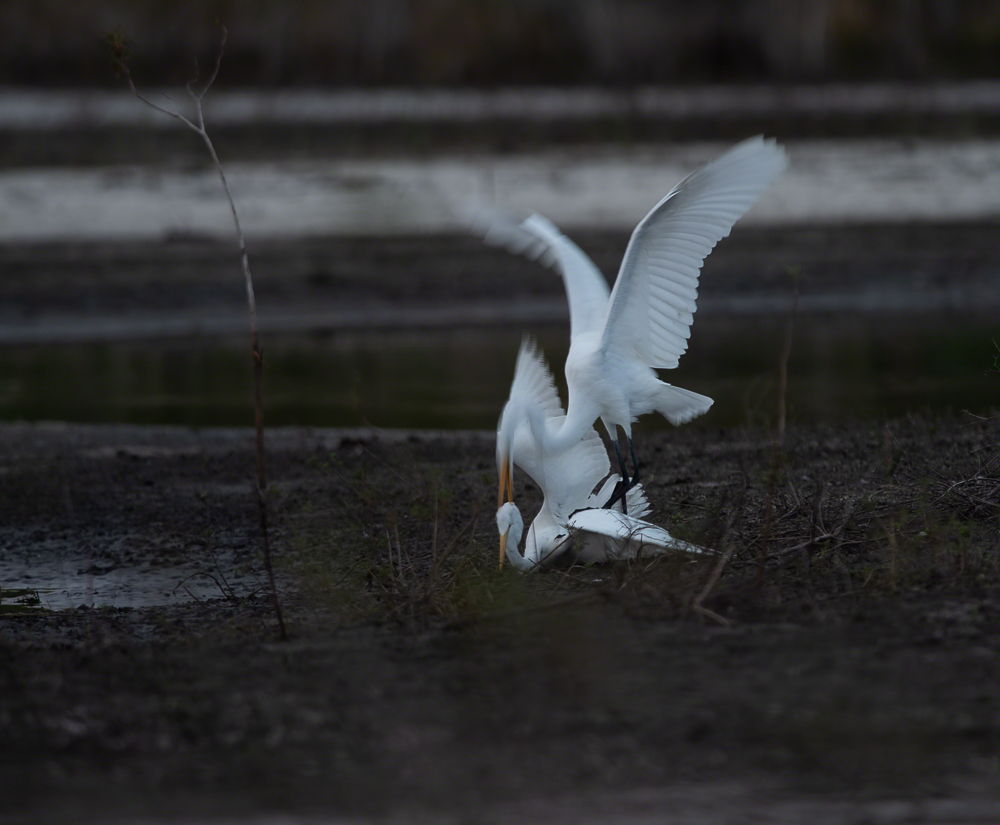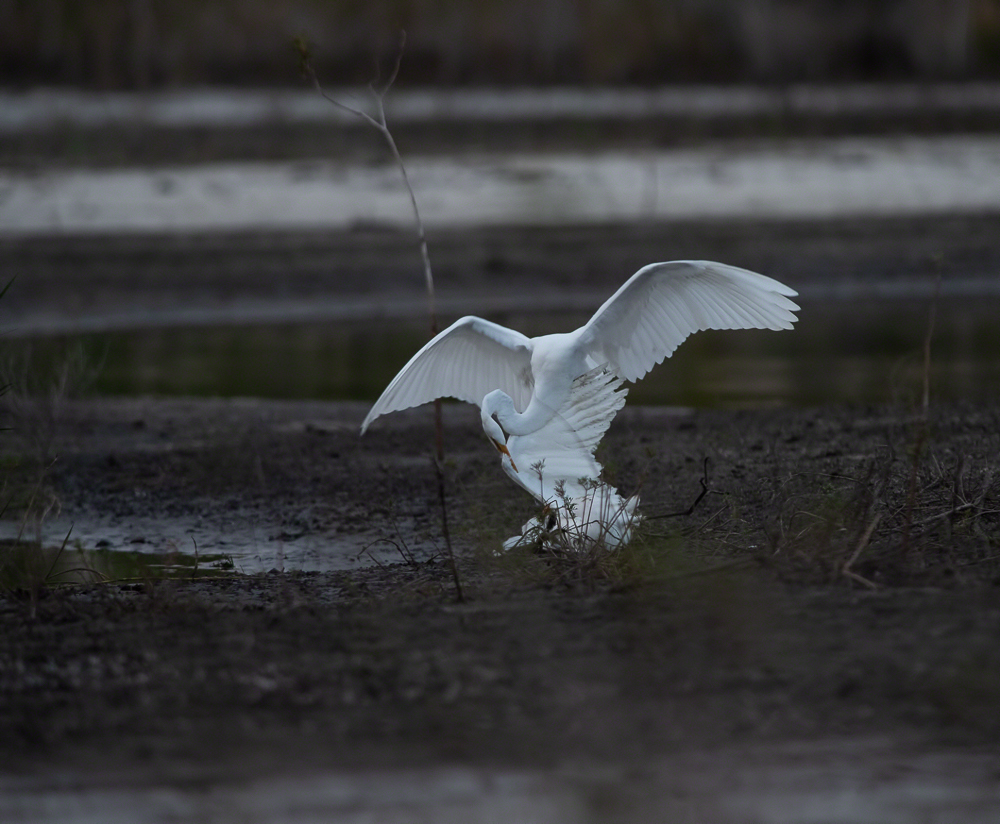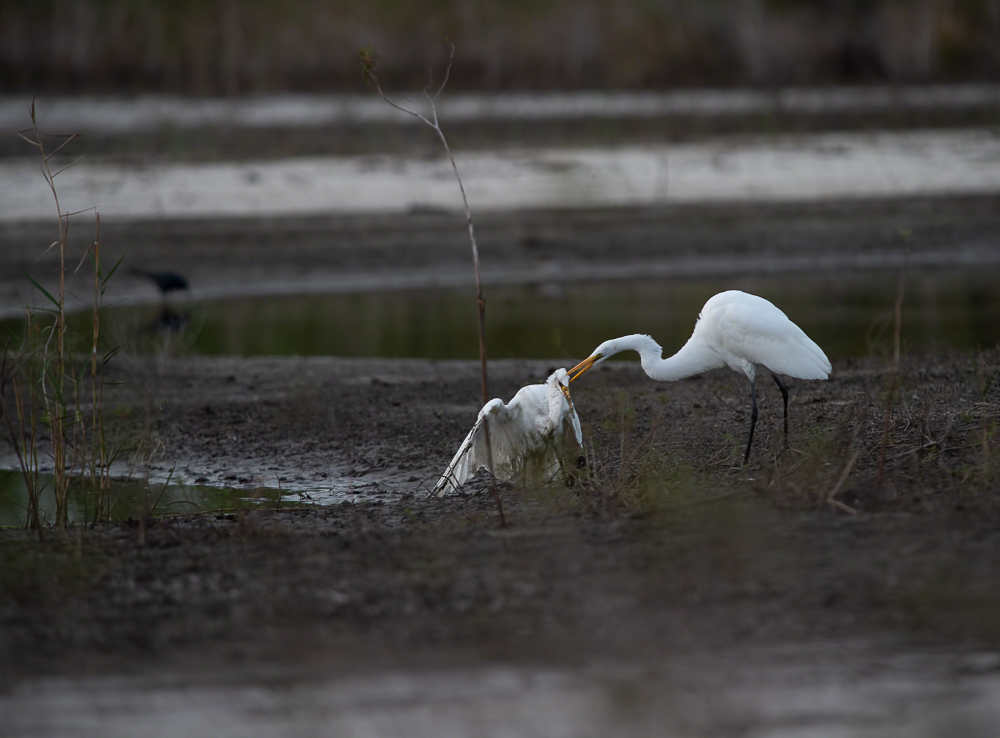12/11/2018
THE SETTING
Near the end of Florida's rainy season is one of my favorite times to explore the forests and hidden marshes of the Everglades and the interior locations of historical woodlands for wildlife activity. A wide variety of birds and other animals like raccoons, opossums, bobcats, deer, coyotes, wild boar and even the elusive Florida panther visit parts of these ponds to forage, drink and even bathe.
I always hike in when it's dark (way before sunrise) and get set up and hidden in my blind so I blend in with the forest scenery.
On this particular morning as darkness lifted, the first shadow out in the pond was that of a reoccurring great blue heron. Once his appearance deemed the pond to be safe from visible harm a lone great egret arrived followed by a few waking eagles who began positioning themselves on pine tree branches around the perimeter of the shallow pond.
My focus this morning was on the eagles. What were they going to do? As I had witnessed before, would they come down and steal stranded fish left by the wading birds when they all flew away as soon as the eagles began to circle above? Would they hunt the shallow water? I was waiting for more of the eagles story.
So far on the many many mornings I have been observing this active marsh, I hadn't witnessed anything but an immediate departure from all the foraging birds like the yellow legs, snowy egrets, tri-colored herons, black birds, killdeer, and more; when the eagles descended upon the pond. Lucky them. The outcome in the past, as expected, was that the pond became an eagle domain to oversee and territorialize as they so pleased. So, this morning I was waiting for some eagle action but unfortunately that wasn't the action I was going to see.
THE INCIDENT

It was still slightly dark on the pond and the sun had not risen above the cloudy horizon when I watched a small juvenile great egret come in for an attempted graceful landing. He flew over a few groups of other content feeding birds and landed a few feet away from the statuesque adult great egret. Within two seconds the adult great egret immediately jumped on the juvi and began delivering death blow jabs to the young one's beak. Each thrust sent out loud crack sounds through-out the pond. The adult pummeled the small egret over and over and even stood on top of him as he buried the young one's face, beak and wings into the dark mud.
The juvi never made a sound, never fought back. The take down was sudden and vicious. The other birds in the pond ignored the violent attack and the eagles stayed on their branches and watched. It seemed to be over in one or two minutes but I just couldn't wrap my thoughts around why the adult killed the juvenile when there was no argument or human perspective motive. Especially when there were lots of other birds sharing the pond (over 20 other egrets and herons) peacefully.

The adult great egret eased about 8 feet away from the juvi's lifeless body and that's when three snowy egrets walked over and just tepidly looked at the scene in curiosity. Then they flew off.
Next thing I saw was the juvi lift its head. Holy crap I thought...it's still alive! Unfortunately the adult saw that too and rushed back over and began jabbing the injured bird until it went lifeless again. What is going on I thought? It was like the adult was enjoying torturing this bird. The adult would stand over the small egrets body and if it tried to get up and escape, it was immediately stabbed in the head and smashed back down into the mud.

In my deduction of philosophy and the belief that you don't interfere with nature I remained hidden but did not take any further photographs of the macabre interaction that had unfolded right before my eyes. This entire event between the adult and the juvenile was bizarre. It appeared as if it was a senseless killing because the juvi had twice tried to leave the adults territory but was strangely tortured.
Then, if I thought I hadn't seen enough or witnessed a tragic rarity in wildlife, the tiny looking juvi shockingly rose up in a pitiful third attempt to slink away from the adult great egret. I was on my way out of the blind when I was shuddered to stillness by what happened next. The great blue heron who had been on the sidelines the whole time was now seemingly coming in to challenge and stop the great egret from any more violence. It was amazing. While the great egret's attention was now fully focused on the great blue heron stalking towards him, the sadly deteriorating juvi gallantly made its one last walk to get away from the pond, with its last ounce of dignity.
Simultaneously, the great blue heron went beak to beak with the great egret. They stood in a duel-like formation with their necks stretched out as far as each could go. Eye to eye, beak to beak, the great blue heron striding toward the great egret made the egret back away and leave the pond area.
What could have caused the rare violent episode in the marsh that morning?
I believe we owe it to ourselves and to all wildlife to help find answers to stop habitat destruction, contaminating pollutants and human negligence from destroying our global ecosystem. Alison & I are in the process of creating a non-profit organization to continue to help educate and document the rarities and beauty of wildlife behavior while we still have wildlife to view in its natural habitat. Time is definitely ticking away for the beautiful creatures that depend on this earth for survival.
(All photographs are straight out of camera and ©MarcHarris/MarcHarrisWildlife. All rights reserved.)